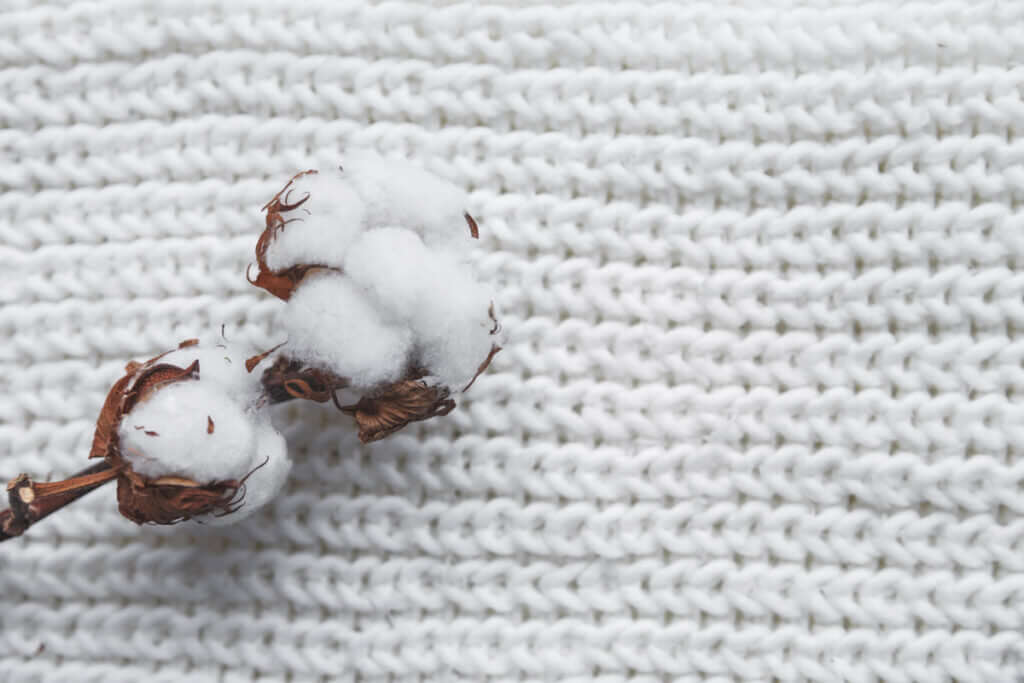
Advantages of using vintage cotton. Will it be better than today's cotton?
Vintage cotton is making a strong comeback in the textile industry, and it’s no coincidence. While modern cotton is widely available and cheap to produce, vintage cotton offers unmatched character, quality, and sustainability. As fashion brands and textile manufacturers seek differentiation in a saturated market, going back to basics — quite literally — might just be the smartest move.
As a vintage supplier, we’ll break down the key differences between vintage and modern cotton, and explain why vintage cotton is not just a nostalgic option, but a strategic and sustainable choice for B2B buyers and quality-focused fashion brands.
What is vintage cotton and how is it different from modern cotton?
Before diving into the benefits, it’s essential to clarify what we mean by "vintage cotton" and how it compares to the cotton commonly used today. This section introduces the technical and production-related distinctions that make vintage cotton so unique.
Fiber origin and production method
Vintage cotton refers to textiles manufactured at least 20 to 30 years ago, often using traditional spinning and weaving techniques. The fibers used were typically longer and less chemically treated, leading to stronger and more durable fabrics.
In contrast, modern cotton is often grown intensively, using genetically modified seeds and synthetic fertilizers. The resulting fiber is shorter, and the fabric tends to be lighter, less robust, and more uniform — ideal for mass production, but not necessarily for long-lasting use.
Mass production vs. craftsmanship
One of the key differences lies in how the fabrics are made. Vintage cotton was often produced in smaller batches, with more attention to detail and less reliance on automation. This resulted in garments that not only felt better but also aged gracefully over time.
Modern cotton, meanwhile, prioritizes efficiency. Fabrics are pre-treated, softened, and often bleached to ensure consistency across large quantities. While this supports scalability, it often sacrifices the individuality and texture that define vintage cotton.
The environmental impact: vintage cotton vs. modern cotton
Beyond aesthetics and feel, one of the most compelling reasons to choose vintage cotton is its reduced environmental footprint. The contrast between the production methods of modern cotton and the reuse of vintage fabrics reveals the true cost — both ecological and human — of today’s fast-paced textile industry.
In the next two sections, we’ll examine the environmental consequences of conventional cotton manufacturing and explain why vintage cotton offers a far more sustainable alternative.
Chemical processes and industrial treatment in modern cotton
Modern cotton farming and textile processing rely heavily on chemical inputs. From pesticides used during cultivation to bleaching agents and fabric softeners used in finishing, the entire supply chain is designed to optimise yield and consistency — not environmental health.
These treatments not only require vast amounts of water and energy, but they also leave behind residues that can irritate the skin and pollute water systems. Many garments marketed as “soft” or “pre-washed” have undergone intensive chemical processing to achieve that feel, often at the cost of durability and sustainability.
Moreover, large-scale mechanised farming and manufacturing have accelerated soil depletion, biodiversity loss and water overuse, particularly in countries with poor environmental regulations. The end result is a product that looks clean but comes with a hidden ecological debt.
Why vintage cotton is a more sustainable choice
Vintage cotton, by contrast, requires no new cultivation, no additional processing, and no added environmental burden. Every time a garment is reused or repurposed, we avoid the emissions and resource consumption associated with producing a new one.
This makes vintage cotton a highly efficient choice in terms of lifecycle sustainability. It extends the usable life of textiles, reduces landfill waste, and encourages circular economy practices. For companies aiming to meet ESG goals or improve their sustainability narrative, incorporating vintage cotton into their product lines is not only ethical — it’s smart branding.
Used responsibly, vintage cotton can become a powerful tool to reduce overproduction, promote responsible consumption, and connect your brand with consumers who value authenticity and environmental responsibility.
Quality, texture and longevity: technical advantages of vintage cotton
When evaluating fabrics for professional textile applications, performance matters. The way a material behaves over time — how it wears, washes, and withstands use — is crucial. Vintage cotton isn’t just valued for its aesthetics; it also brings measurable technical advantages that modern cotton often fails to match.
In this section, we’ll explore two key aspects where vintage cotton excels: fibre strength and fabric resistance, and the natural, unique texture that sets it apart in high-quality garments.
Fibre strength and fabric resistance
One of the defining traits of vintage cotton is its superior fibre quality. Older production methods often used long-staple cotton varieties, which result in stronger yarns and a tighter weave. This means greater resistance to tearing, deformation, and pilling — essential properties for garments intended to last years, not just a few washes.
By contrast, today’s industrial cotton is grown for speed and volume. Shorter fibres, lower quality control, and chemical weakening during processing result in fabrics that may feel soft at first but degrade rapidly. For applications such as workwear, uniforms or outer garments, this can translate to increased costs and waste due to shorter replacement cycles.
Vintage cotton, with its proven longevity, stands out as a cost-effective alternative when total garment lifespan is taken into account — particularly in B2B sectors that value durability over trend-driven turnover.
Unique textures and natural feel
Beyond its physical durability, vintage cotton offers a sensory quality that’s difficult to replicate with modern materials. The texture is often more irregular and structured, providing garments with a tactile richness and visual depth that mass-produced cotton lacks.
Because it has not been over-processed or artificially softened, vintage cotton retains more of its natural fibre characteristics. This includes breathability, a more stable shape over time, and the ability to develop a patina — a subtle change in feel and appearance that reflects its usage and adds to its uniqueness.
In a market saturated with synthetic blends and overly uniform finishes, vintage cotton offers authenticity. It brings back the feel of garments that were made to last — and to be worn, not just sold.
Where vintage cotton makes a difference in textile products
While the benefits of vintage cotton are clear, it's equally important to understand where these advantages truly stand out in real-world applications. Not all garments demand the same level of quality or durability, but in many cases — especially in B2B contexts — the fabric choice can determine long-term performance, customer satisfaction, and brand perception.
This section highlights two scenarios where vintage cotton offers tangible value: products that rely on high-quality cotton for comfort and durability, and collections that aim to differentiate through craftsmanship and authenticity.
Clothing that demands premium-quality cotton
Certain garments are subject to higher wear and tear, or are expected to maintain comfort and structure over time. Think of t-shirts designed for printing and resale, sweatshirts, work uniforms, or undergarments — all of them benefit from cotton that can endure repeated washes, resist deformation, and remain breathable.
Vintage cotton, with its natural strength and limited chemical treatment, performs exceptionally well in these cases. Its durability reduces the rate of replacement and returns, while its breathability ensures long-term comfort — essential for items worn close to the skin or under physical activity.
For brands that supply retailers, promotional companies, or uniform distributors, using vintage cotton becomes a point of distinction that goes beyond aesthetics. It’s a sign of material integrity and a commitment to quality.
A competitive edge for fashion and textile brands
In a global market flooded with fast fashion and synthetic blends, standing out often requires more than just good design. The materials chosen must also communicate values: authenticity, sustainability, craftsmanship. Vintage cotton delivers all three.
Brands that incorporate vintage cotton into their collections gain access to a storytelling asset — a fabric with history, character, and ethical appeal. Whether through capsule collections, eco-conscious lines or artisanal products, the decision to use vintage cotton can enhance brand image and build loyalty among increasingly demanding customers.
It’s not only about selling clothes. It’s about selling a product with soul — and for many buyers, that makes all the difference.
Final thoughts: why your brand should choose vintage cotton
The choice between vintage and modern cotton is not just about aesthetics or nostalgia — it’s about quality, sustainability, and long-term value. As we've seen, vintage cotton offers technical benefits that go beyond the surface: stronger fibres, fewer chemical treatments, and a natural texture that modern processes struggle to replicate.
In an industry where durability, authenticity, and environmental impact are becoming key differentiators, vintage cotton stands out as an intelligent material choice — especially for brands and suppliers that prioritise quality over quantity.
If your company is looking to elevate its product offering, reduce environmental footprint, and deliver garments that truly stand the test of time, vintage cotton deserves your attention.
Explore our range of vintage cotton-based garments and discover how tradition can meet innovation — without compromise.

Leave a comment